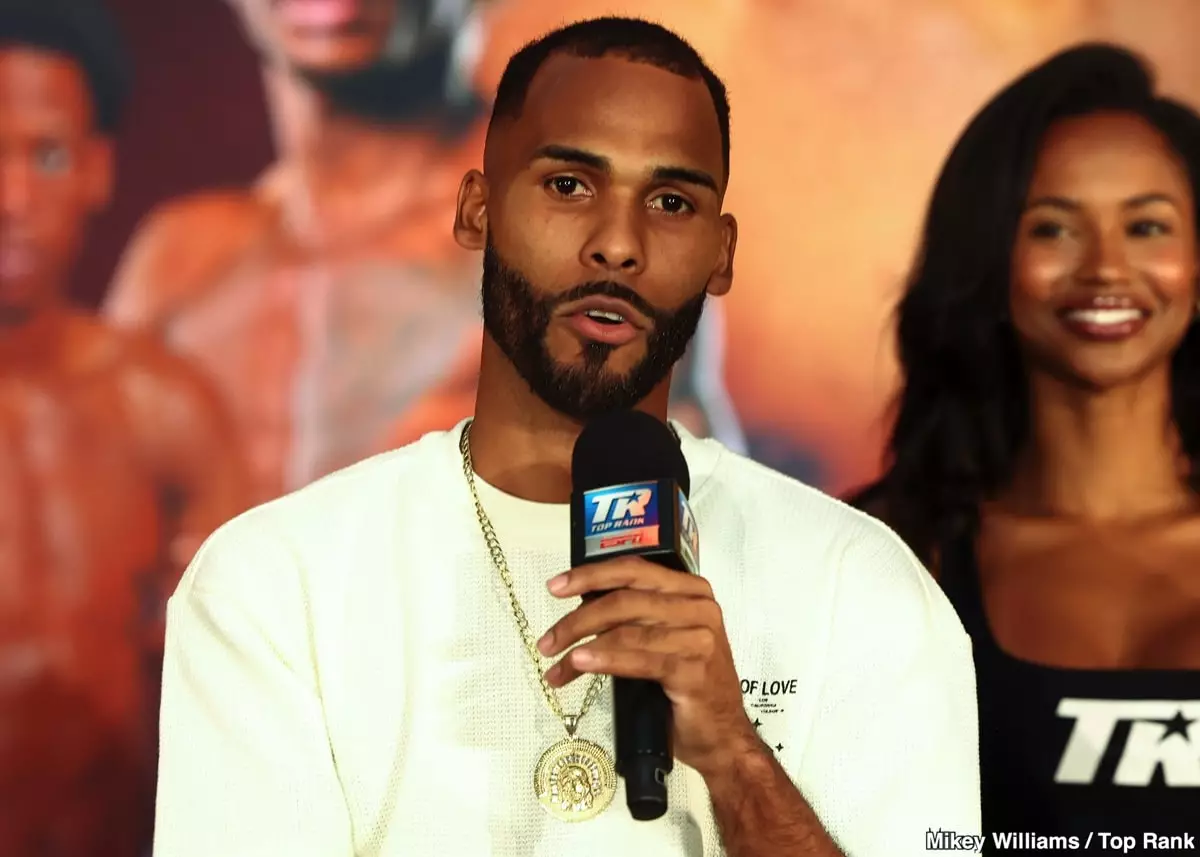In boxing, the scales are often the first hurdle fighters must conquer. This was dramatically illustrated last Friday when former WBO Lightweight Champion Keyshawn Davis significantly exceeded the weight limit preceding his bout with Edwin De Los Santos, weighing in over four pounds heavy. The impact of this oversight reverberates far beyond Davis’s individual performance; it raises serious questions about professionalism, safety, and the consequences of underestimating the sport’s regulations. By failing to adhere to the scale, Davis not only jeopardized his career but brewed a tempest of disappointment for De Los Santos and his team, who found themselves robbed of a crucial opportunity.
What compounded the issue was an unfortunate altercation later that evening—Davis’s decision to engage in a skirmish with his brother’s opponent. This distraction showcased a lack of focus and discipline, elements essential for any athlete aiming for success in the ring. Davis’s actions cast a shadow over an event that should have been about showcasing athletic prowess, instead revealing a reality marred by his weight miscalibration and unprofessional conduct.
De Los Santos’s Frustration: A Warrior’s Perspective
Edwin De Los Santos’s reaction to the debacle is nothing short of poignant. Despite the perilous circumstances, he expressed an unwavering desire to continue fighting, driven by his ambition to claim the title. Yet, his promoter, Sampson Lewkowicz, made the prudent choice to prioritize safety over the chance of a lucrative bout. Lewkowicz’s assertion that Davis’s weight could pose life-threatening risks reveals the often-ignored reality of professional boxing: size and weight disparities can lead to devastating consequences. De Los Santos’s eagerness to fight, faced with the potential for immense injury, underscores the dangers inherent in the sport and brings to light the critical need for protective measures that are sometimes overlooked in quest of glory.
De Los Santos’s feeling of being shortchanged in both opportunity and financial compensation is palpable. He pointedly referred to an offer of $50,000 on the table versus his coach’s $300,000 demand for ensuring fairness given the weight differential. This conflict not only illustrates the financial stakes involved but showcases the inner turmoil many fighters experience balancing ambition with the harsh realities set by their safety and health.
Professional Dissolution: A Turning Point for De Los Santos
The fallout from the fight’s cancellation saw De Los Santos part ways with Lewkowicz shortly after the events of that night. This split may have been necessary, but it raises troubling questions about the future for De Los Santos, whose career momentum has slowed significantly since his prior loss to Shakur Stevenson over a year ago. The fragility of a fighter’s trajectory can often hinge on such unpredictable events—one misstep can send them tumbling into the abyss of inactivity and uncertainty.
With De Los Santos now seeking a new management team, the landscape appears muddy. A fighter of his caliber, boasting an impressive record of 16 wins—14 by knockout—should attract opportunities. However, his recent inactivity and the disbandment from his promoter might deter potential suitors. De Los Santos’s quest is not just about finding a promoter; it reflects the deeper struggle athletes face in securing a stable and supportive environment where their talents can flourish unimpeded.
The Broader Implications for Boxing
These events expose a much larger, systemic issue within professional boxing—namely, how issues of weight management and combat readiness ripple through the sport, affecting not just the fighters involved but the entire promotional machine surrounding them, including sponsors, fans, and promoters. Fighters must realize that their actions have consequences, and the integrity of their sport hinges upon their adherence to the rules. As this incident reminds us, clarity and professionalism are paramount—not only for securing bouts but for ensuring that every fighter has an equal footing in the sport they love.
Davis, while talented, must reevaluate his approach to the rigors of boxing as well as the responsibilities that come with ambition. He is at a crossroads—not merely in his career but in the manner in which he embodies the athlete’s role in protecting the integrity of boxing. The story of Keyshawn Davis and Edwin De Los Santos serves as a cautionary tale and illustrates how one misstep can shape destinies in the ever-volatile world of boxing.

